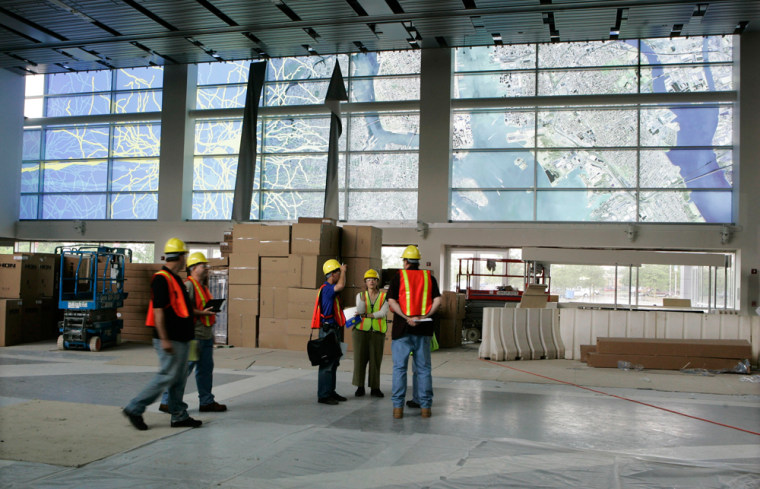Kids, this is not your older brother's Liberty Science Center.
New Jersey's most popular museum hopes that its 22-month expansion and makeover will extend its appeal to all age groups, from preschoolers to adults.
Almost all of the exhibits are new, including a skyscraper gallery in which visitors can enter a chamber and be lashed by hurricane-force wind and rain, or don a harness and walk along a steel beam more than 10 feet off the ground.
"This will appeal to the more fearless of our visitors," museum president Emyln Koster said.
The center, which had enthralled a generation of school children since opening in 1993, reopened July 19 after a renovation that almost doubled its size.
A new 60-space lot for buses has been paved, ensuring that school children will not have to cross any roadway to enter the museum.
Much of the museum's contents will be grouped in six major exhibits. Besides the skyscraper gallery, those include "Our Hudson Home," examining the industry and ecology of the Hudson River.
"Science centers need to be about the reality of how science and society connect," Koster said. "We've designed all the exhibits to have many layers of understanding."
Instead of a wide variety of smaller displays, the museum is focusing on the six big exhibits.
"We have chosen to take a deeper, broader dive into each of these themes," Koster said.
Several crowd favorites, however, have been retained: the Madagascar hissing cockroach, the lobby's expanding geodesic dome, and the IMAX movie theater.
Half the money for the $109 million expansion came from the state, with the remainder from private donors and grants, Koster said.
A coalition of union ironworkers and steel companies helped fund a portion of the skyscraper exhibit: a 15-ton base column from the World Trade Center. The flag-draped steel, recovered with its concrete base, stands 17 feet tall.
The twin towers stood just across the Hudson River from Liberty State Park, home to the museum, as well as the ferry terminal to the Statue of Liberty.
By generating about 20 percent of its own electricity from renewable sources, the new museum has about the same demand from the grid as the old museum, Koster said.
The renewable power comes chiefly from solar panels on the roofs of the lobby and bus walkway canopy, with some coming from a wind turbine. The museum has also gone green — literally —by planting an insulating grass roof atop the gift shop.
Another new feature is a "cloud" of 9,000 tiny lights that will hover above the lobby. Cameras around the room track visitor movements as well as the color of their clothing, allowing computers to create an ever-changing group portrait.
